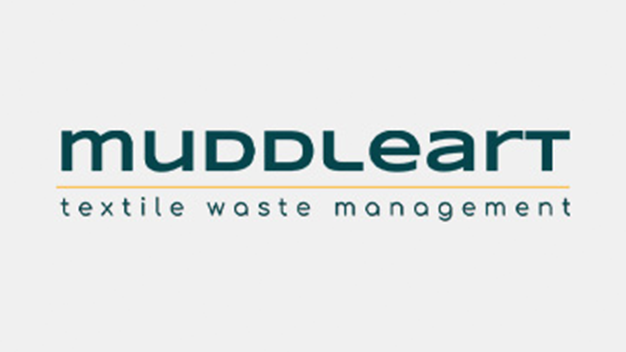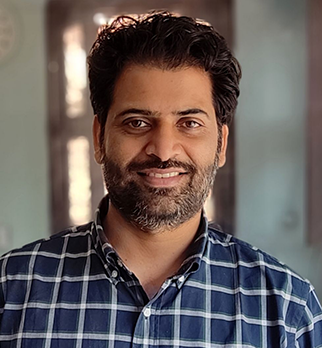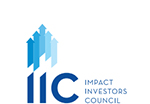|
Action for Impact
Dialogue with Sanjay Chauhan, Muddleart
|
|

1 Could you share a little bit about Muddleart with us and the role you play in the pre-consumer waste management supply chain?
|
Muddleart is focused on transforming the informal pre-consumer textile waste management system into a formal, structured industry. As a second-generation professional in this field, I have witnessed firsthand the environmental, social, and economic risks associated with informal waste management practices.
Our goal at Muddleart is to create evidence-based formal textile waste management systems that can demonstrate economic viability, attract investment, and generate measurable impact. Currently, an estimated 20-30% of pre-consumer textile waste in India still ends up in landfills, incinerated, or downcycled due to a lack of proper infrastructure. The informal nature of the industry has also led to a lack of economic data and potential worker exploitation, particularly affecting female workers involved in sporting activities.
Muddleart aims to address these challenges by designing comprehensive solutions for waste generators. We focus on collecting data, understanding pain points, and demonstrating the potential for circularity within textile waste management.
Our vision is to create a system where textile waste is viewed through the lens of circularity, enabling advancements in recycling, upcycling technologies, and traceability.
.jpg)
MuddleArt’s Service Process
|
2 a) What are some of the challenges you face on both the supply and demand sides of your value chain and how are you currently working to manage these challenges?
|
One of the primary challenges we face is the lack of comprehensive infrastructure to capture 100% of textile waste in India. This gap presents both a challenge and an opportunity to create a large, untapped market with significant impact potential.
On the supply side, the unorganized nature of the textile waste disposal system in India poses a significant challenge. Many export garment manufacturers do not declare 100% of their textile waste. To address this, we are working to bring brands and policies into the mainstream to ensure comprehensive textile waste management, aiming for zero dumping and 100% waste channelization.
Financially, we face challenges in maintaining cash flow and working capital. We purchase pre-consumer textile waste from generators at market rates to avoid disrupting their existing revenue streams. This necessitates substantial upfront capital investment.
On the demand side, we conduct detailed sorting of the collected waste, which is crucial for effective recycling and upcycling. Different recyclers require specific types of textile waste, so we act as matchmakers, connecting sorted waste with appropriate recyclers based on their needs.
To overcome these challenges, we are focusing on building technology infrastructure, improving our sorting capabilities, and fostering multi-stakeholder collaborations. We believe that with proper investment and support, we can demonstrate the profitability and impact potential of this venture, encouraging broader industry participation and collaboration.
b) So, essentially, what India needs is a specific value chain geared towards managing specific forms of waste and not look at dry waste management as a broad category?
Absolutely. It's crucial to recognize that different types of waste, such as plastic, textile, and e-waste, require distinct management approaches. Each category has its own set of players, needs, and applications.
In the case of textile waste, timing is critical. Once textile waste reaches a dumpyard or landfill, its value diminishes significantly, often beyond recovery. However, if we can manage the leakage of pre-consumer or post-consumer textile waste before it reaches this stage, we can generate substantial value from it.
This underscores the need for specialized value chains tailored to specific waste types, rather than a broad-brush approach to dry waste management. By developing targeted infrastructure and processes for each waste category, we can maximize resource recovery and minimize environmental impact.
|
3 What role do you see technology playing in the waste collection and segregation process? Where do we stand currently in terms of technology availability and application?
|
While technology may have limited applicability in the collection process, it holds significant potential in the sorting phase. AI-based technologies could greatly enhance sorting efficiency, although their development requires substantial investment and belief in the potential of such solutions.
Currently, our sorting process is largely manual, employing 20-25 female workers to sort 100 tons of waste per month. To scale up to 500 tons per month, we need to integrate technology to augment human capabilities and increase production efficiency.
.jpg) However, it's important to note that, based on our experience with pre-consumer textile waste, 100% technology-based sorting is not feasible. Human intervention remains crucial. Technology can significantly boost efficiency and production, but it should be seen as a tool to assist human workers rather than replace them entirely.
However, it's important to note that, based on our experience with pre-consumer textile waste, 100% technology-based sorting is not feasible. Human intervention remains crucial. Technology can significantly boost efficiency and production, but it should be seen as a tool to assist human workers rather than replace them entirely.
In the post-consumer waste sector, some pilot-stage technologies exist in Europe, but not yet in India. Even these technologies require human operators. The key is to find the right balance between human expertise and technological assistance to optimize the sorting process.
|
4 Could you help us understand your current funding position? What are the key areas where you are looking to deploy funds?
|
We have received initial funding support from our incubators, Social Alpha and S3IDF, which has enabled us to establish basic infrastructure. This includes a facility in Faridabad capable of managing 500-600 tons of pre-consumer textile waste per month, subject to our procurement capacity.
Additionally, we've received a grant from MoHUA (Ministry of Housing and Urban Affairs) for technology development. With support from the Yale School of Management, we've developed a blueprint for waste collection, data recording, transparency, and traceability. However, we currently lack the investment to transform this blueprint into a functional product.
Our primary funding needs are:
- Working capital for upfront collection payments to waste generators
- Operational costs for sorting activities
- Technology development and implementation
- Scaling our operations and expanding our reach
- Investment in these areas would allow us to increase our processing capacity, improve efficiency, and develop the technological infrastructure necessary for transparent and traceable waste management.
|
5 Could you help us understand the economics of such a business model? How long would it take to break-even?
|
Our current business model, which involves the collection, sorting, and selling of textile waste, has the potential to achieve positive unit economics. Based on our experience, we estimate a break-even period of 15-20 months, which we consider reasonable for this industry.
However, it's important to note that the economics can be complex due to the largely informal nature of the recycling sector. We often bear logistical costs for waste collection, including transportation and handling, which informal players might not incur.
To enhance our economic model, we're considering vertical integration by potentially becoming recyclers ourselves. This would allow us to manage both the waste management and impact aspects of the business. In this scenario, we envision channeling about 80% of collected waste to like-minded partners and recycling 20-30% in-house.
This approach would create two revenue streams: one from trading and another from recycling. This diversification could potentially improve our economic outlook and shorten the break-even period.
|
6 Please share a little about your customer profile. Where is the demand for textile waste coming from?
|
Our customer base is currently diverse and geographically spread. We have established relationships with recyclers and middlemen in Panipat, Punjab, and Uttar Pradesh. These connections are crucial for maintaining our operations and ensuring a steady outflow of sorted waste.
We're also in discussions with major brands like Ikea and Trident, who are interested in comprehensive waste management solutions. However, as a young company, we've faced challenges in meeting their full requirements due to our current bandwidth limitations.
The demand for textile waste primarily comes from recyclers who specialize in different types of fabrics and compositions. Each recycler has specific requirements in terms of material type, color composition, and size, which aligns with our sorting and matchmaking services.
As we grow and expand our capabilities, we aim to cater more effectively to large brands seeking end-to-end waste management solutions, while continuing to serve our existing network of recyclers and middlemen.
|
7 You work extensively with the waste picker workforce. What would you suggest are aspects to keep in mind for an enterprise intending to work with this workforce and eventually formalize them?
|
Working with the informal waste picker workforce requires a sensitive and inclusive approach.
Here are key aspects to consider:
Approach with empathy: It's crucial to approach these workers without instilling fear or hesitation. They have been the backbone of India's circular economy and deserve respect.
Recognize their expertise: Despite potential limitations in formal knowledge or infrastructure, these workers possess valuable experience and skills.
Address socio-economic challenges: Many workers, particularly women, face issues related to health, hygiene, and fair wages. These aspects cannot be ignored in formalization efforts.
Facilitate financial inclusion: We've helped over 300 informal workers obtain GST registration and open bank accounts, enabling formal transactions.
Gradual transition: Understand that these workers have established ways of working. Any changes should be introduced gradually and with their buy-in.
Mutual benefit: Approach the relationship as mutually beneficial. Recognize that their cooperation is crucial for the success of formal waste management systems.
Provide support: Offer assistance in areas like financial literacy, health and safety training, and access to social security measures.
.jpg) Our experience in engaging with this workforce has been largely positive. The key lies in approaching them with respect, understanding their needs, and demonstrating how formalization can benefit them.
Our experience in engaging with this workforce has been largely positive. The key lies in approaching them with respect, understanding their needs, and demonstrating how formalization can benefit them.
|
8 Last but not least, what is your view on the necessity for India to come out with EPR guidelines for textile waste management? What kind of macro enablers do you think this sector needs?
|
The implementation of Extended Producer Responsibility (EPR) guidelines for textile waste management in India is crucial and urgently needed. EPR would bring several significant benefits to the sector:
Accountability: It would establish clear accountability for apparel brands, manufacturers, and recyclers in managing textile waste.
Investor confidence: EPR guidelines would significantly boost investor confidence in the sector, potentially unlocking higher levels of investment.
Holistic approach: It would encourage a focus on managing the entire supply chain, not just recycling, leading to more comprehensive waste management solutions.
Impact measurement: EPR would facilitate better measurement of economic, social, and environmental impacts of waste management efforts.
In terms of macro enablers, the sector needs:
Policy support: Beyond EPR, supportive policies that incentivize formal waste management and recycling are necessary.
Investment: Both financial investment and knowledge/technology transfer are crucial for sector growth.
Infrastructure development: Significant investment in waste management infrastructure is needed across the country.
Collaboration platforms: Mechanisms to foster collaboration between various stakeholders in the waste management ecosystem.
Research and development: Support for innovation in recycling technologies and waste management processes.
Skill development: Programs to train and upskill workers in the formal waste management sector.
Public awareness: Campaigns to educate consumers about responsible textile disposal and the importance of circular economy principles.
In conclusion, while EPR guidelines are a critical step, they need to be part of a broader, supportive ecosystem that encourages innovation, investment, and collaboration in the textile waste management sector.
|
|
|
Sanjay Chauhan, Founder & CEO, Muddleart
Sanjay Chauhan is the Founder and CEO of MuddleArt, a pioneering company transforming India’s informal textile waste ecosystem. With a double Master’s degree in Social Work and Philosophy, Sanjay combines academic knowledge with practical expertise in waste management. His deep understanding of the textile industry and passion for social impact led him to create MuddleArt in 2019, bridging sustainability and profitability. Under his leadership, MuddleArt has diverted over 27,000 tonnes of textile waste, partnered with 250+ downstream stakeholders, and supported the livelihoods of 200+ individuals. Sanjay is committed to fostering collaboration and innovation, envisioning a future where waste is a resource and sustainable practices are the norm.
About Muddleart
MuddleArt is a pioneering company dedicated to transforming India’s informal textile waste ecosystem. Founded in 2019, MuddleArt bridges the gap between sustainability and profitability through innovative waste management solutions. With a deep understanding of the textile industry and a strong commitment to social impact, MuddleArt creates a platform where waste is seen as a valuable resource.
Operating on a B2B model, MuddleArt serves as an intermediary between manufacturers and recyclers, upcyclers, and other small enterprises. By organizing pre-consumer textile waste, the company promotes sustainability through repurposing, ensuring high-quality consumer experiences and profitability.
Since its inception, MuddleArt has diverted over 27,000 tonnes of textile waste, partnered with 250+ downstream stakeholders, and supported the livelihoods of 200+ individuals.
|
|
About Impact Investors Council:
Impact Investors Council, India (IIC) is a member-based national industry body formed with an
objective to build and strengthen the impact investing eco-system in India. To know more about our work visit https://iiic.in or reach out to secretariat@iiic.in
|
Disclaimer: Data and Information in this newsletter is made available in good faith with the exclusive intention of helping market and ecosystem players, policymakers and the public build a greater
understanding of the Indian impact investing market. The data is collated from sources believed to be reliable and accurate at the time of publication. Readers are urged to exercise independent judgment and diligence in the
usage of this information for any investment decisions
Some of the information provided in this newsletter is supplied by third parties. It is important that all users understand that third party information is not an endorsement of any nature and has been put together with the
sole purpose of benefiting stakeholders.
|
| Unsubscribe |
|
|
|



.jpg)
.jpg) However, it's important to note that, based on our experience with pre-consumer textile waste, 100% technology-based sorting is not feasible. Human intervention remains crucial. Technology can significantly boost efficiency and production, but it should be seen as a tool to assist human workers rather than replace them entirely.
However, it's important to note that, based on our experience with pre-consumer textile waste, 100% technology-based sorting is not feasible. Human intervention remains crucial. Technology can significantly boost efficiency and production, but it should be seen as a tool to assist human workers rather than replace them entirely.
.jpg) Our experience in engaging with this workforce has been largely positive. The key lies in approaching them with respect, understanding their needs, and demonstrating how formalization can benefit them.
Our experience in engaging with this workforce has been largely positive. The key lies in approaching them with respect, understanding their needs, and demonstrating how formalization can benefit them.